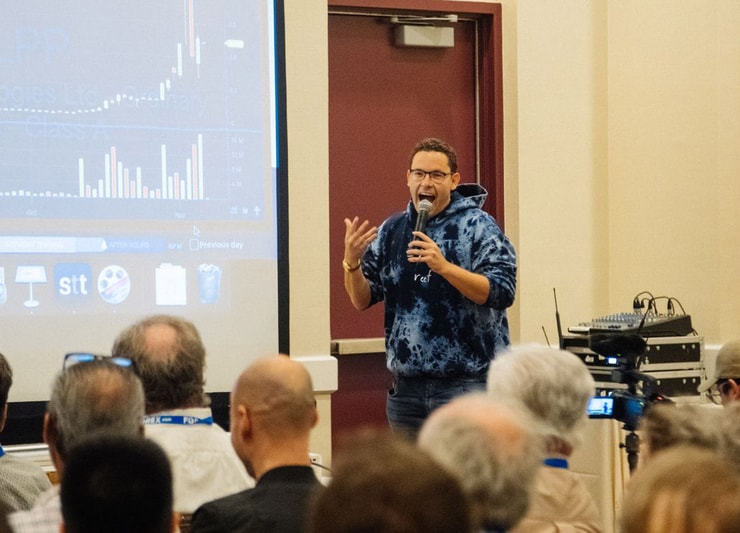Ladies and gentlemen,
There are soooooo many profit opportunities in the market right now …
This week already:
- AERWINS Technologies Inc. (NASDAQ: AWIN) spiked 700%.*
- GameStop Corporation (NYSE: GME) spiked 270%.*
- AMC Entertainment Holdings Inc. (NASDAQ: AMC) spiked 300%.*
- Faraday Future Intelligent Electric Inc. (NASDAQ: FFIE) spiked 2,300%.*
- SiNtx Technologies Inc. (NASDAQ: SINT) spiked 530%.*
- Edible Garden AG Incorporated (NASDAQ: EDBL) spiked 140%.*
And that’s not even all of the runners … See my Tweet below:
RECORD DAY/WEEK FOR https://t.co/occ8wKmlgm STUDENTS, WHEWWWWW, THANK YOU $GME $AMC $FFIE $SINT $EDBL $AWIN $LIDR $GRPN PLEASE RETWEET IF YOU LOVE THIS MARKET & CONGRATULATE ALLLLLL THESE UPCOMING TRADING CHALLENGE STUDENTS ABSOLUTELY CRUSHING IT:
ArtOfWar: Locked in $2300 today… pic.twitter.com/jVX4JrDUEB
— Timothy Sykes (@timothysykes) May 15, 2024
When the larger market is hot, we have more opportunities to profit.
On Wednesday the market shot to new all-time highs after The U.S. Bureau of Labor Statistics reported lower inflation from March to April of this year. A move from 3.5% to 3.4% year-over-year.
The goal is between 2% and 3%. We’re moving in the right direction. And the market is ecstatic!
Share prices of the S&P 500 ETF Trust (NYSE: SPY) jumped to new all-time highs yesterday. Take a look at the chart below, every candle represents one trading day:

And that’s not the only catalyst pushing stocks higher in our small-account niche.
The meme stock volatility continues to impress, thanks to the spike on GameStop Corporation (NYSE: GME).
Here’s how traders are pulling cash from the market right now:
My Process For Profits

2025 Millionaire Media, LLCI’ve used the exact same profit process for over 20 years.
In that time, I’ve pulled $7.6 million in profits from the stock market (that number includes my losses).
All of my millionaire students use this trading process too.
One of my most successful students, Jack Kellogg, has profited $12.5 million in a fraction of my trading career (again, that number includes his losses).
See Jack’s Tweet below from yesterday’s trading:
WHAT A FUCKING MORNING +$210k on $SINT SWING TRADE ALERTED FOR ALL SEVEN-FIGURE CYCLE MEMBERS YESTERDAY AT $0.05 – NOT TO MENTION I CALLED $FFIE THE DAY BEFORE AT $0.063 WHICH HAS GONE ALL THE WAY TO $0.70s.
ALSO ABSOULETELY CRUSHED AMC & GME SHORT OFF 4AM OPEN WITH… pic.twitter.com/xj8jCPtMpf
— Jack Kellogg (@Jackaroo_Trades) May 15, 2024
What a time to be alive.
You don’t need to be a Wall Street bigwig to profit in the market. Thanks to high speed Wifi and software like StocksToTrade, we can profit off of these runners from anywhere.
I like to travel, so my students usually see me in exotic locations. But I’m not the norm …
Take a look at Jack’s photo below for a +$1 million setup:

Is that your bedroom Jack? With a Call of Duty poster on the wall?
You’re a millionaire trader lol.
At least put some real art up there. Maybe a Monet? A Rembrandt? Lmao!
All jokes aside, I’m extremely proud to have a student like Jack. I’m proud of ALL my millionaire students. And all the students who continue to study these setups.
The road to success can be challenging … But the reward is worth it.
Follow Jack’s Next Trade Alert

2025 Millionaire Media, LLCThe student has become a master.
And lucky for you, our community grows traders who give back!
Jack Kellogg isn’t the only millionaire trader who interacts with students in the Challenge chat. But considering his immense success, he’s one of the most valuable mentors that we have right now.
I’m even learning from Jack’s setups.
Yes, we use the same trading process and patterns. But historically, I sell too early. In 2024 I’m trying to grow more disciplined.
That’s why I committed and moved $500,000 into a separate account … Specifically to learn from Jack’s setups.
>> This is where you can find Jack’s next #1 stock pick <<
There are new opportunities every single day in this market.
Pay attention … Or miss out entirely.
Cheers.
*Past performance does not indicate future results







Leave a reply